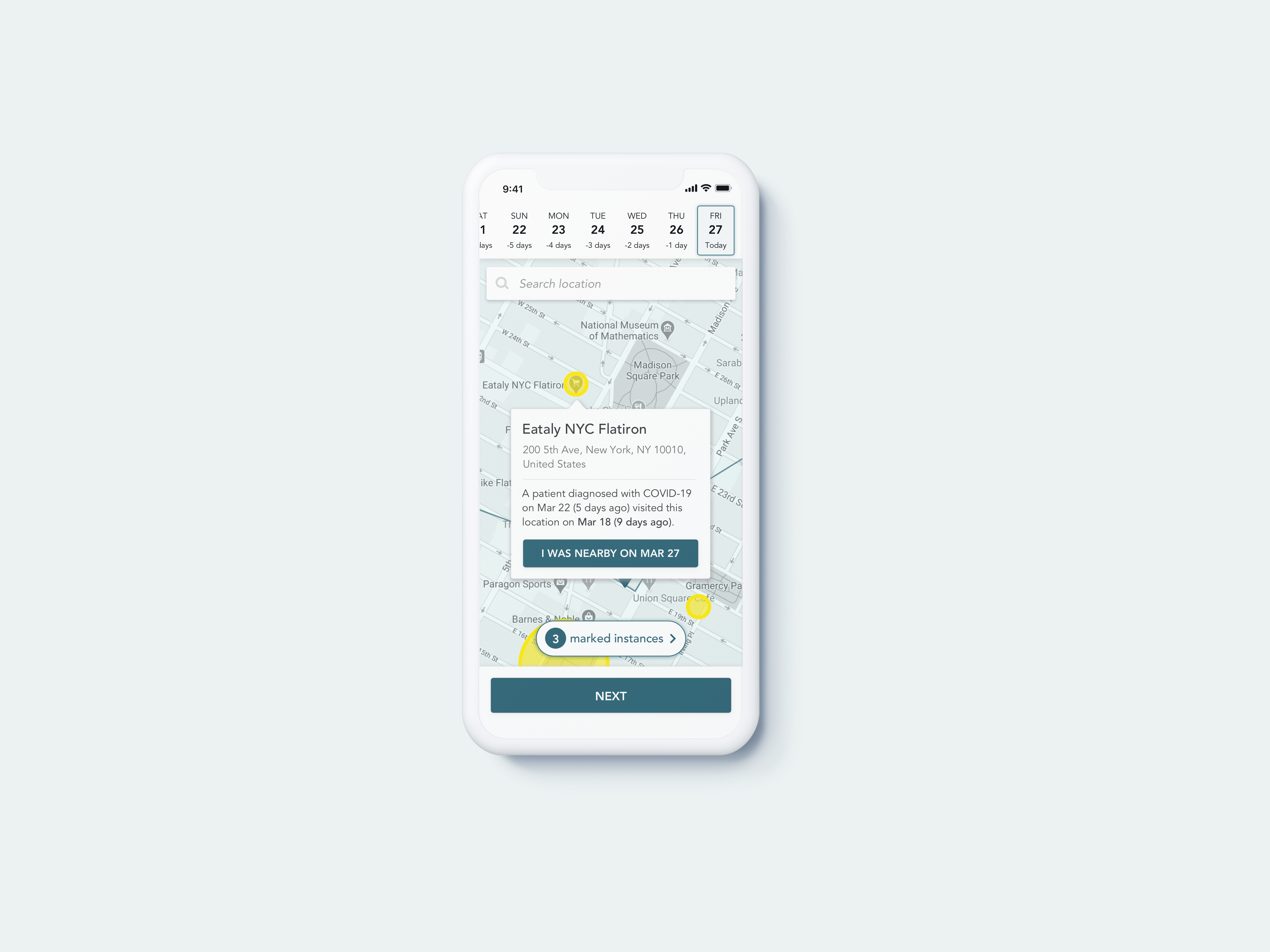
OVERVIEW
This was a submission for the COVID-19 Design Challenge by Dream Projects. The open brief gave us designers the opportunity to use our creativity to come up with digital solutions that may be of use during the global pandemic. The COVID-19 problem that I chose to focus on is the need for more home care and self-diagnosis in order to avoid overwhelming hospitals.
This submission was chosen as a Runner Up by Dream Projects.
PLATFORMS
iOS
ROLES
UX & UI Design
User Testing
Prototyping
TOOLS
Sketch, InVision
PROBLEM
COVID-19 project brief from Dream Projects:
"As we speak the world has reached global pandemic status and we need to put our collective brains together to help solve a variety of issues and systematic failures. At Dream Projects our mission is in part to build a better world around us and at times like this, we can think of no better opportunity to let designers do what they do best…solve problems. We are leaving this brief open to any and all ideas to help solve this global crisis and won’t limit you to think inside a specific box. You can explore deficiencies in the health care system, inadequacies in information or resources, or even grander infrastructure problems. Choose a problem to solve and come up with a solution."
SOLUTION
After considering the level of need and digitization of brainstormed problems, I identified that home care and tracing were the ones with the most potential.
To enable home care as best as possible, I created an app that triages people with cold and flu symptoms based on their symptoms, risk, and exposure. After determining a person's overall risk, the app offers care knowledge, tele-monitoring, and follow ups to ensure the person is getting treatment.
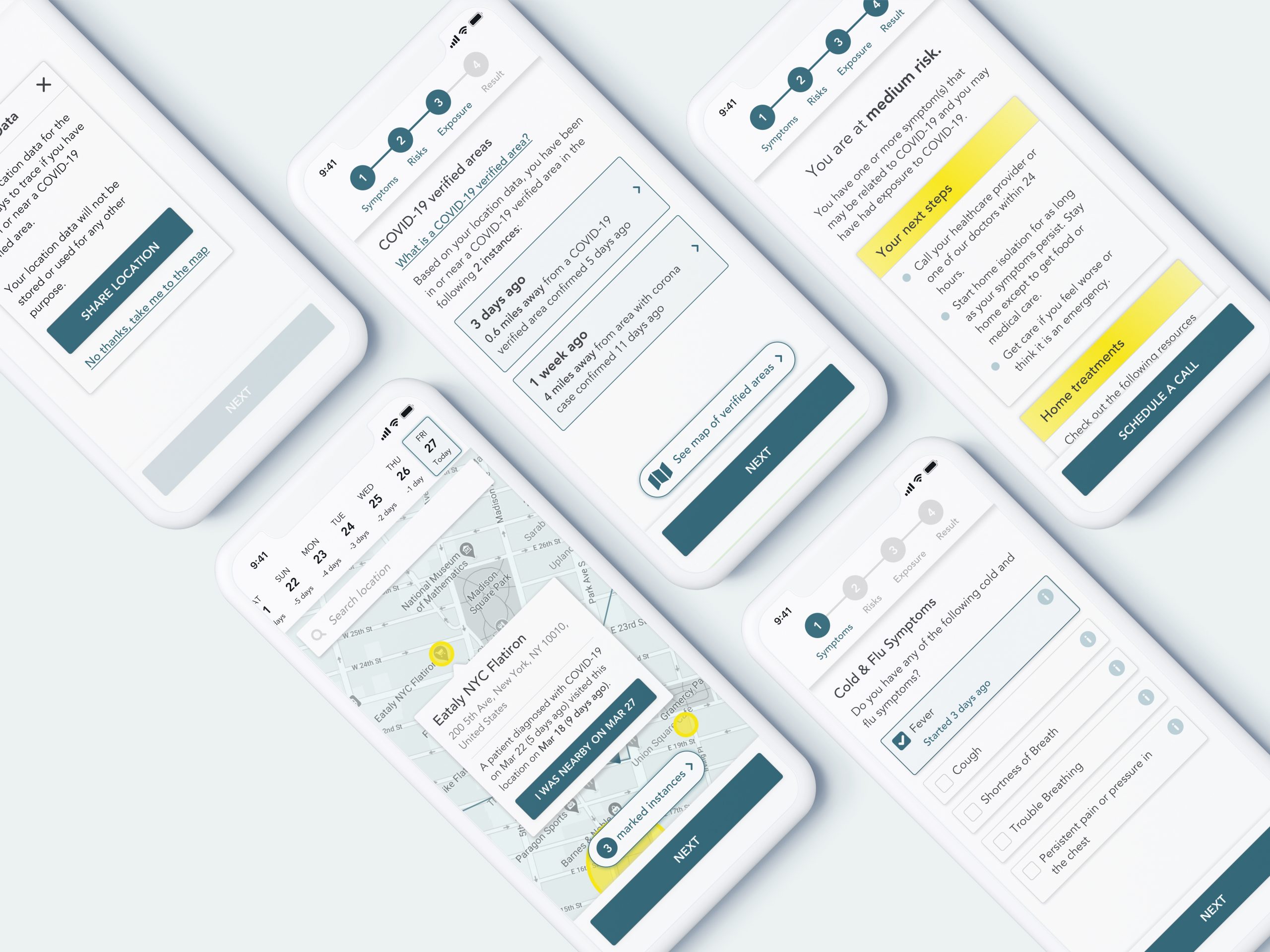
CHOOSING THE RIGHT PROBLEM
I brainstormed problems associated with COVID-19, which I analyzed based on level of need and potential to solve digitally. Then, I interviewed people with cold and flu symptoms and people who are treating COVID-19 patients in hospitals.
Home care surfaced as one of the problems with the highest need and the highest potential. It was voiced as a concern from both potential patients and healthcare workers - people who are sick prefer to stay and treat at home if possible, and hospitals are already overwhelmed. Contact tracing was also high in need and potential, and hadn't been offered to the public in a digital tool at the time.
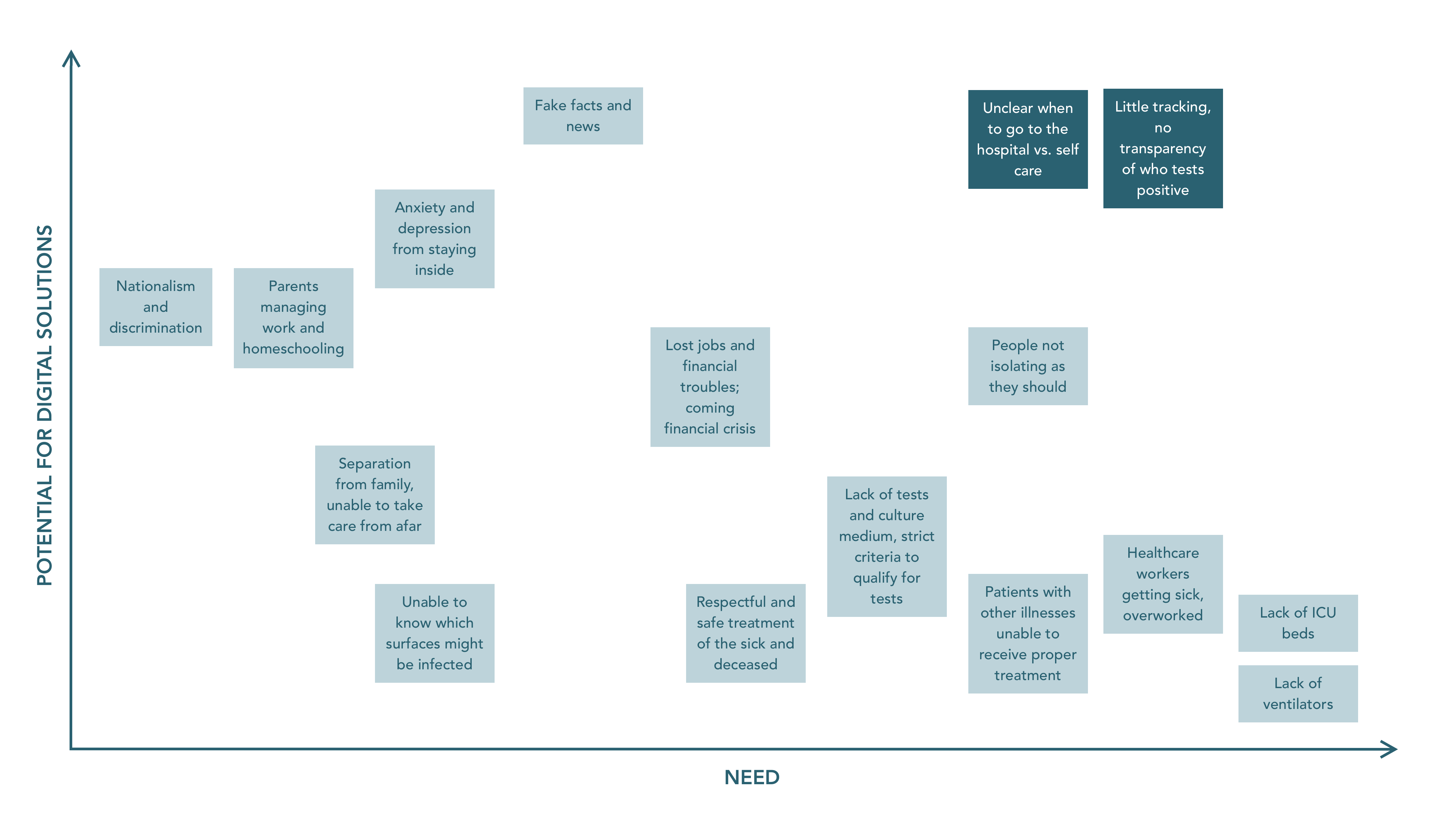
PERSONA AND USER FLOW
As part of the process of choosing the right COVID-19 problem to focus on, I interviewed people with cold and flu symptoms and people who are treating COVID-19 patients in hospitals. I used the information from these interviews to construct the following persona and user flow:
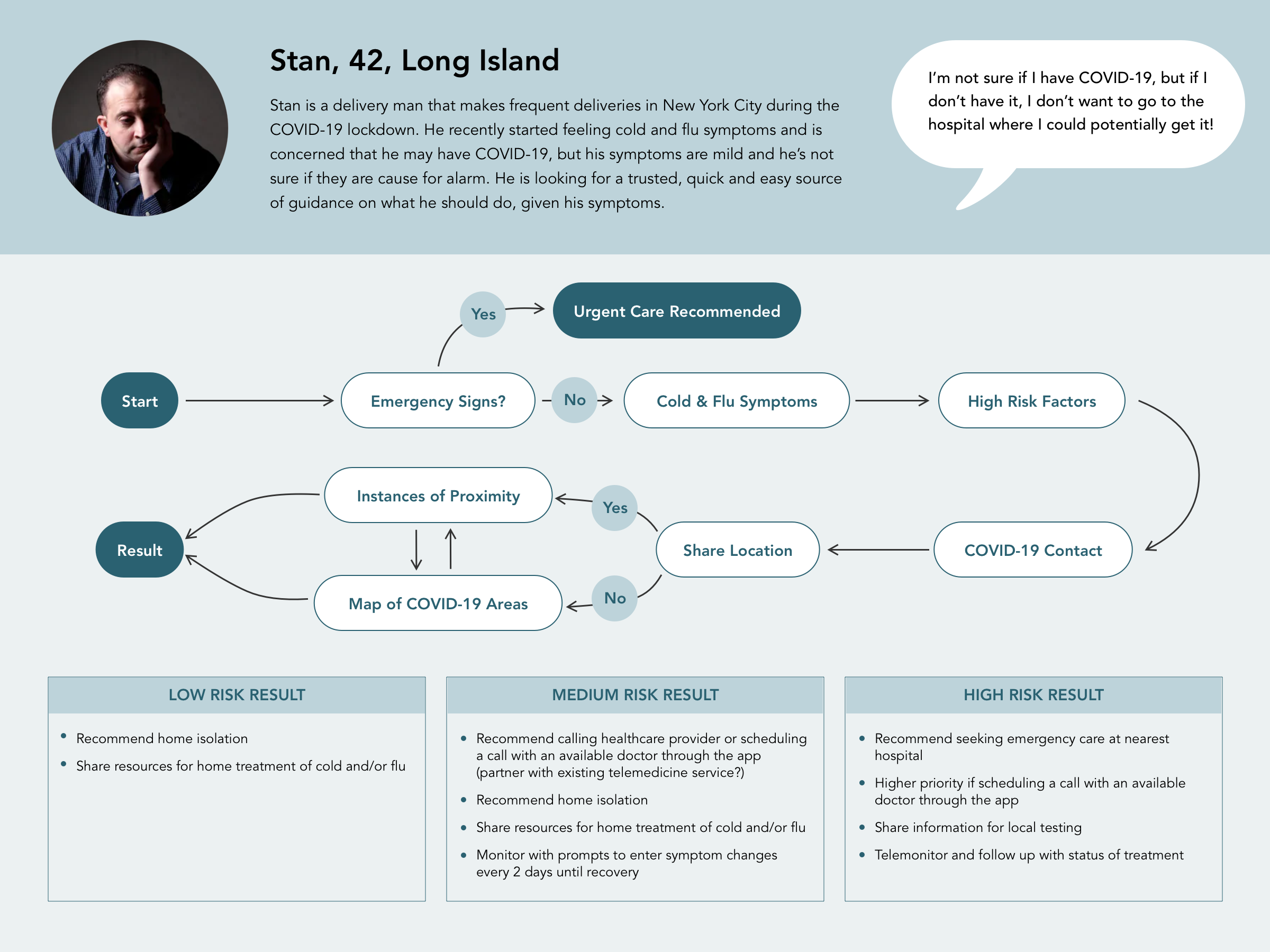
SELF-DIAGNOSIS FLOW FOR HOME CARE
With home care, I focused on the self-diagnosis flow because tele-medicine services for clinicians to screen and monitor patients remotely already exist. I combined the top concerns expressed by people who were sick with CDC information and recommendations regarding COVID-19 to create a self-diagnosis flow to triage people with cold and flu symptoms into the following categories:
- Low risk: Share resources for home treatment of cold/flu
- Medium risk: Recommend calling healthcare provider or scheduling a call through the app; Share resources for home treatment of cold/flu and monitor with prompts every 2 days
- High risk: High priority for scheduling a call through the app; Share information for local testing and tele-monitor for status of treatment
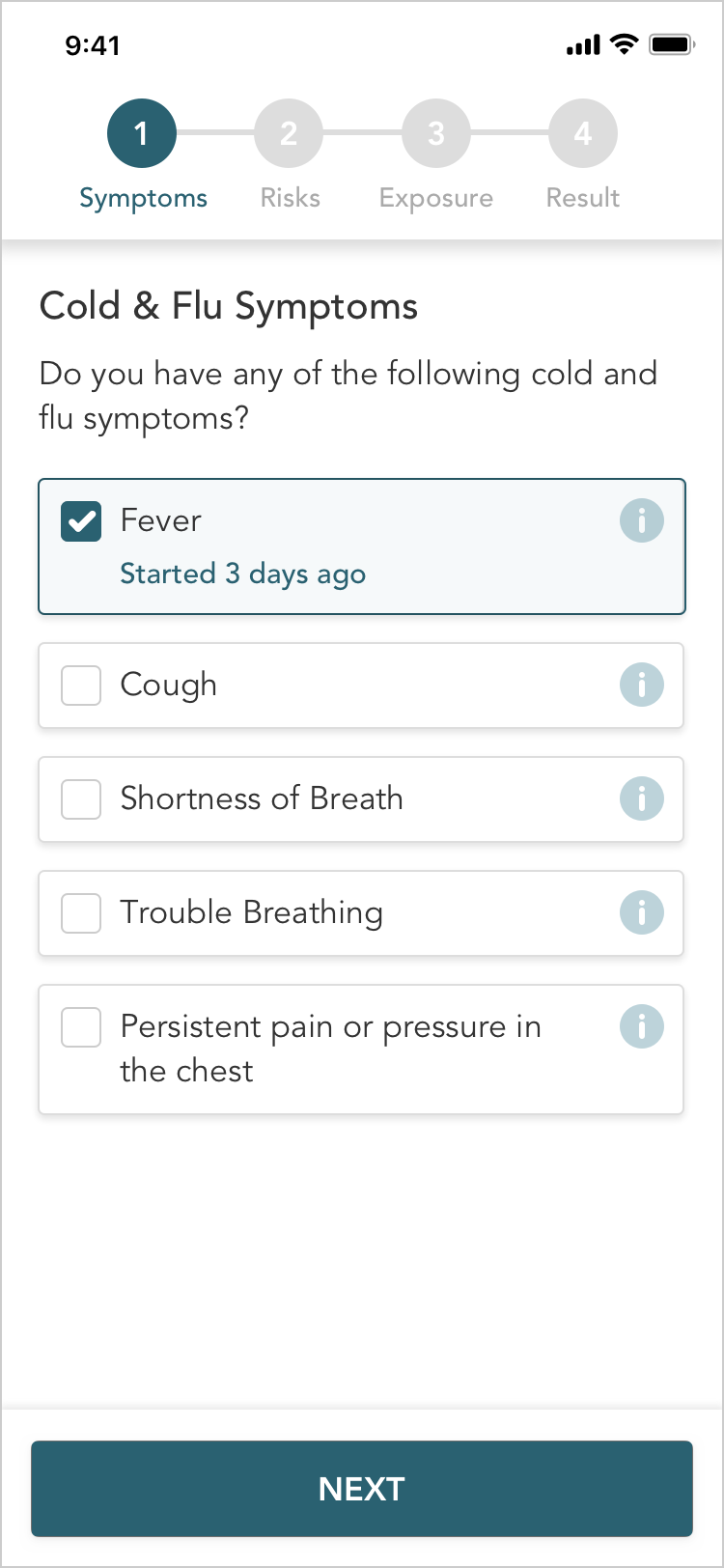
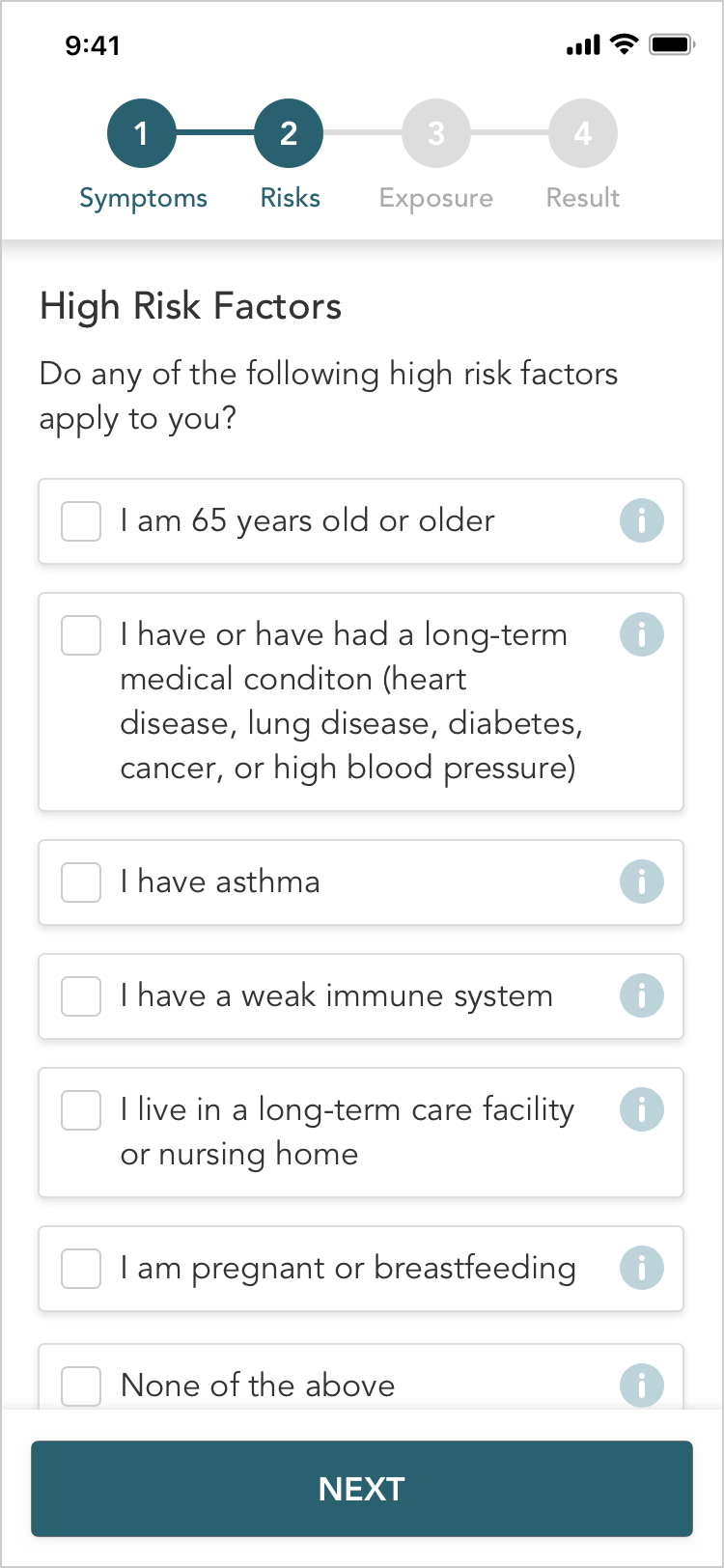
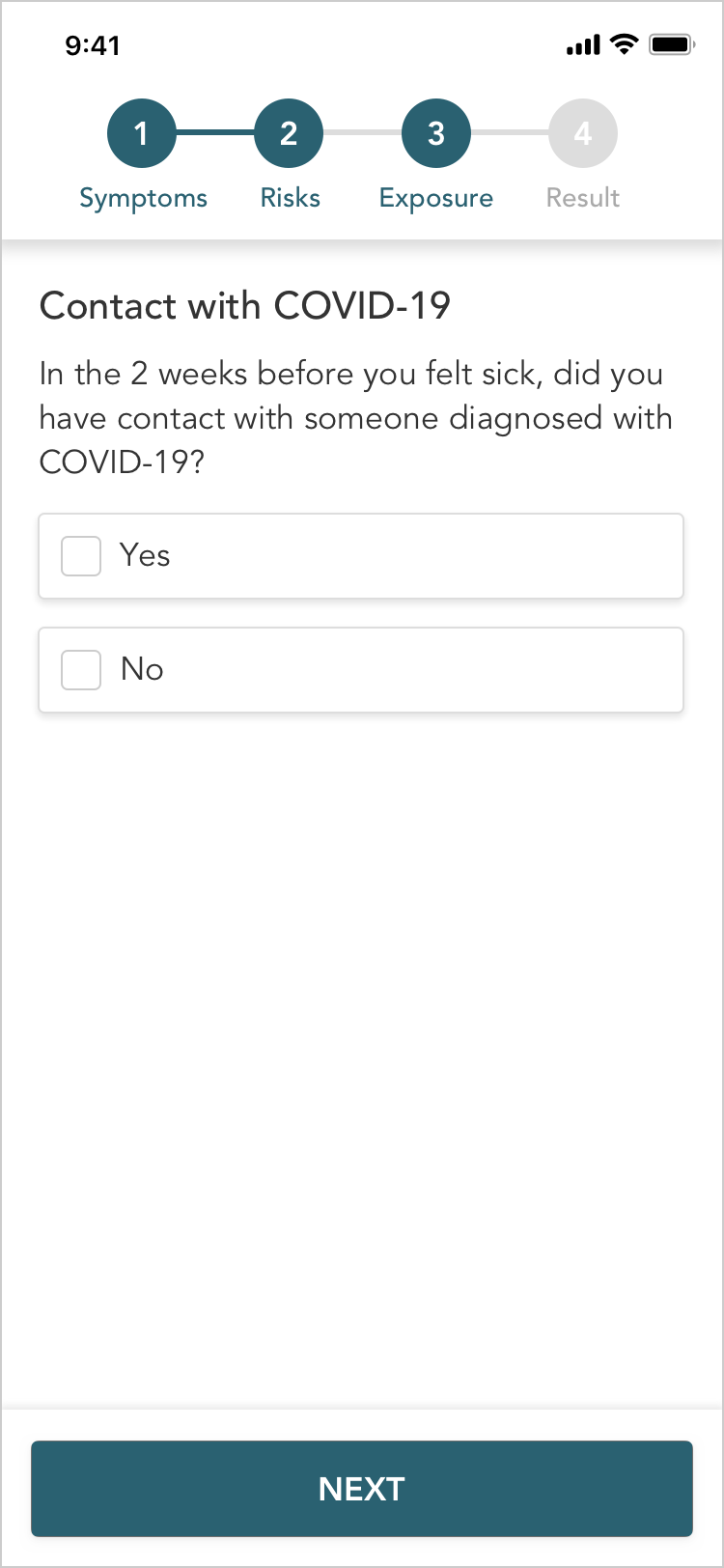
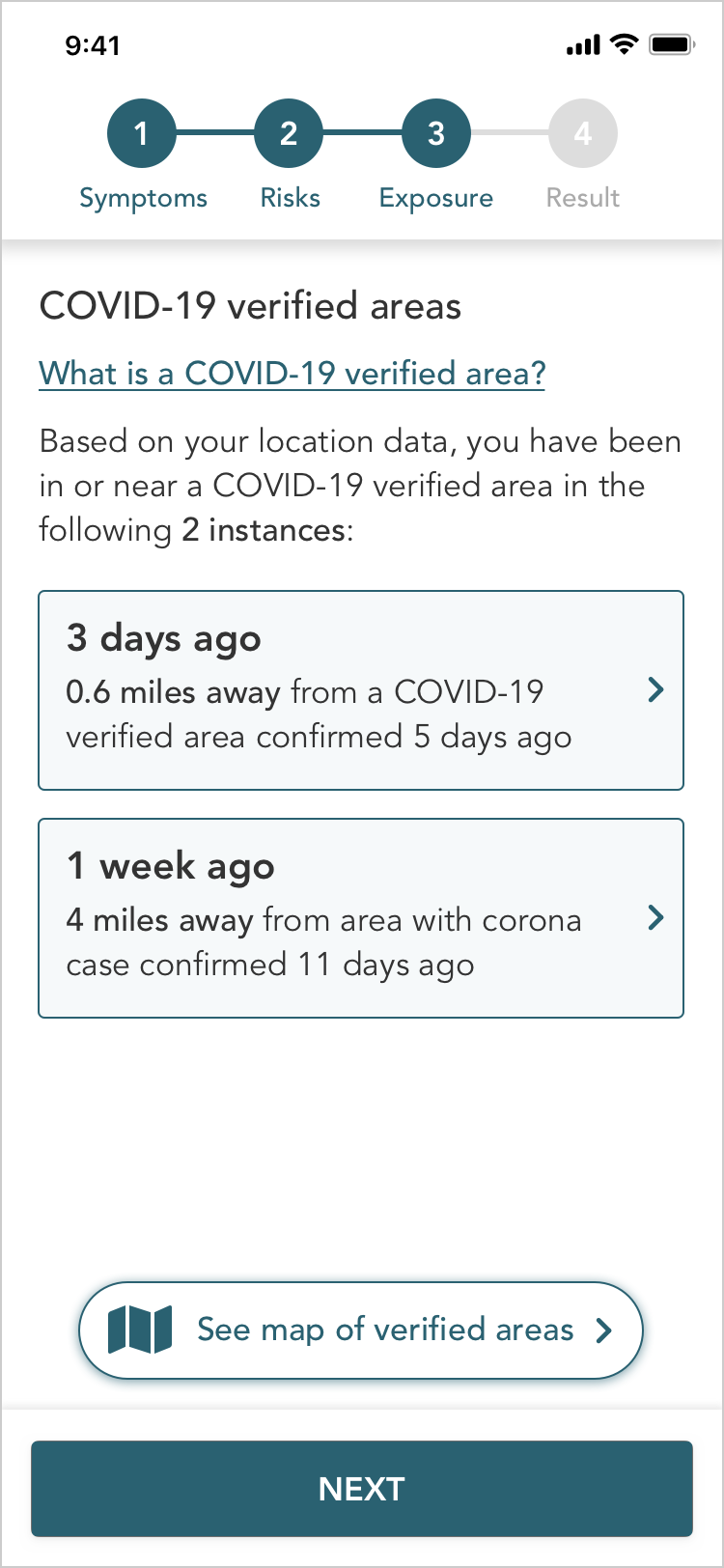
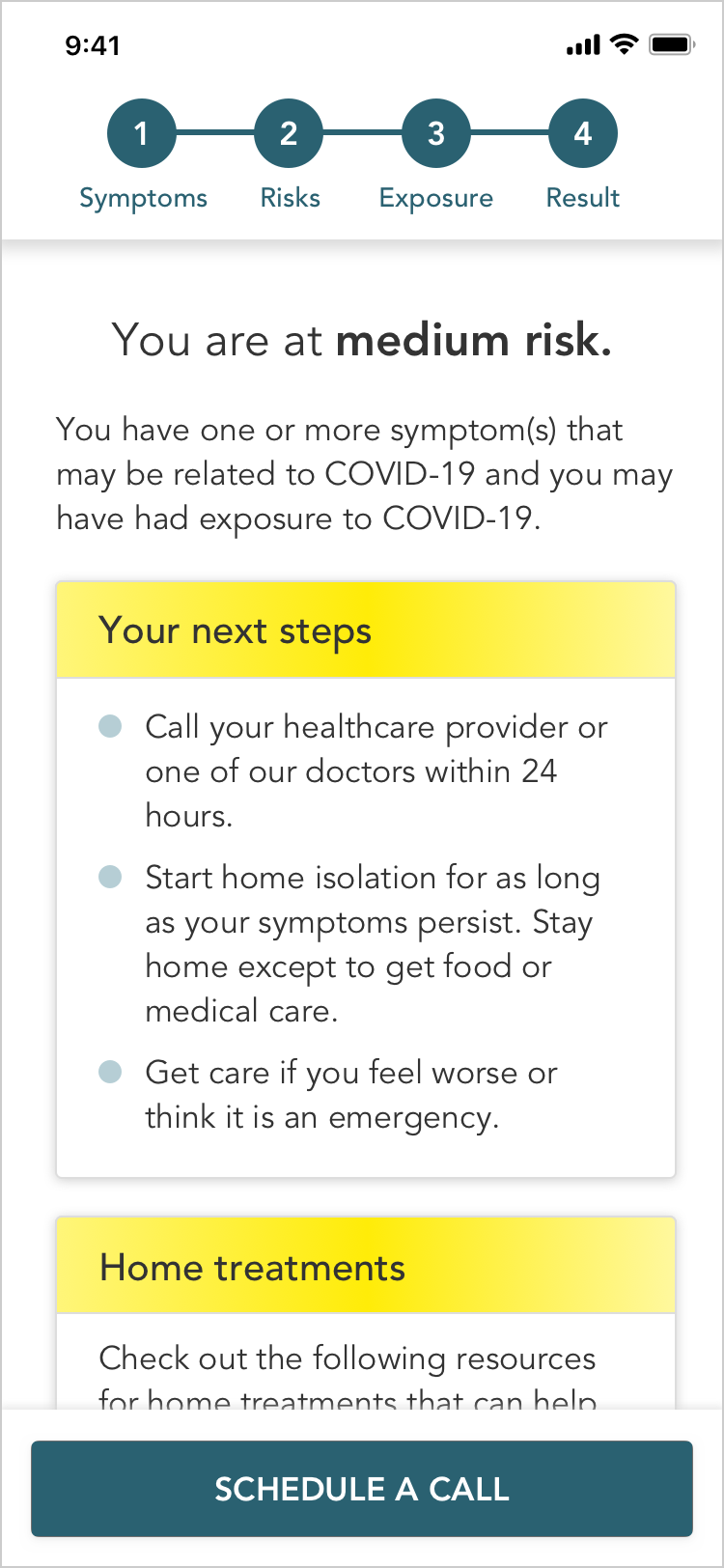
CONTACT TRACING
A key part of self-diagnosis that did not exist yet in other tools is tracing potential exposure, and tracing was another top issue that surfaced during research. Thus, I also included a feature to make it easy to trace potential exposure to COVID-19.
AUTOMATIC TRACING
To make tracing as easy as possible, I included location sharing. Once the user agrees to share his/her location, the app scans the user's location data for the past 14 days. This location data is then compared to the database of locations COVID-10 verified areas - areas where people diagnosed with COVID-19 are known to have visited while they were potentially contagious.
MANUAL TRACING
For users who do not want to share their location with the app, manual tracing is also available.
The map view shows all COVID-19 verified areas on a particular day in yellow. The user can see where the COVID-19 verified areas are for each day in the past 2 weeks and mark if s/he was nearby on a particular day.
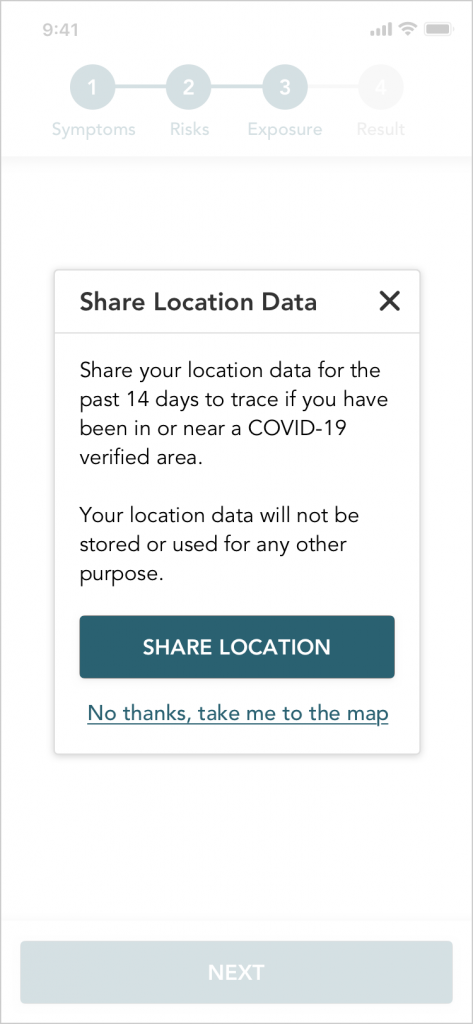
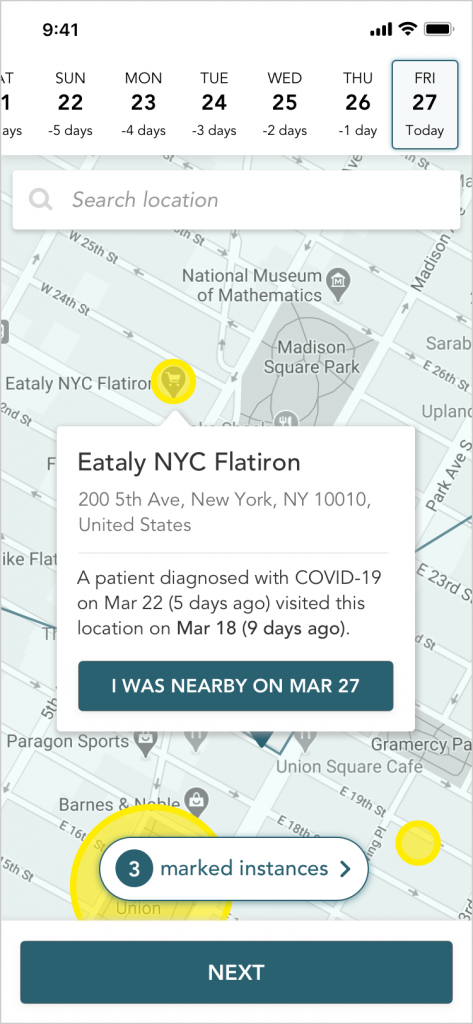
DESIGN SYSTEM
I aimed to make the app simple and soothing for a user that is sick and stressed. I chose a calm teal as the base color, with yellow to highlight important information.

PROTOTYPE
Explore the InVision prototype below:

